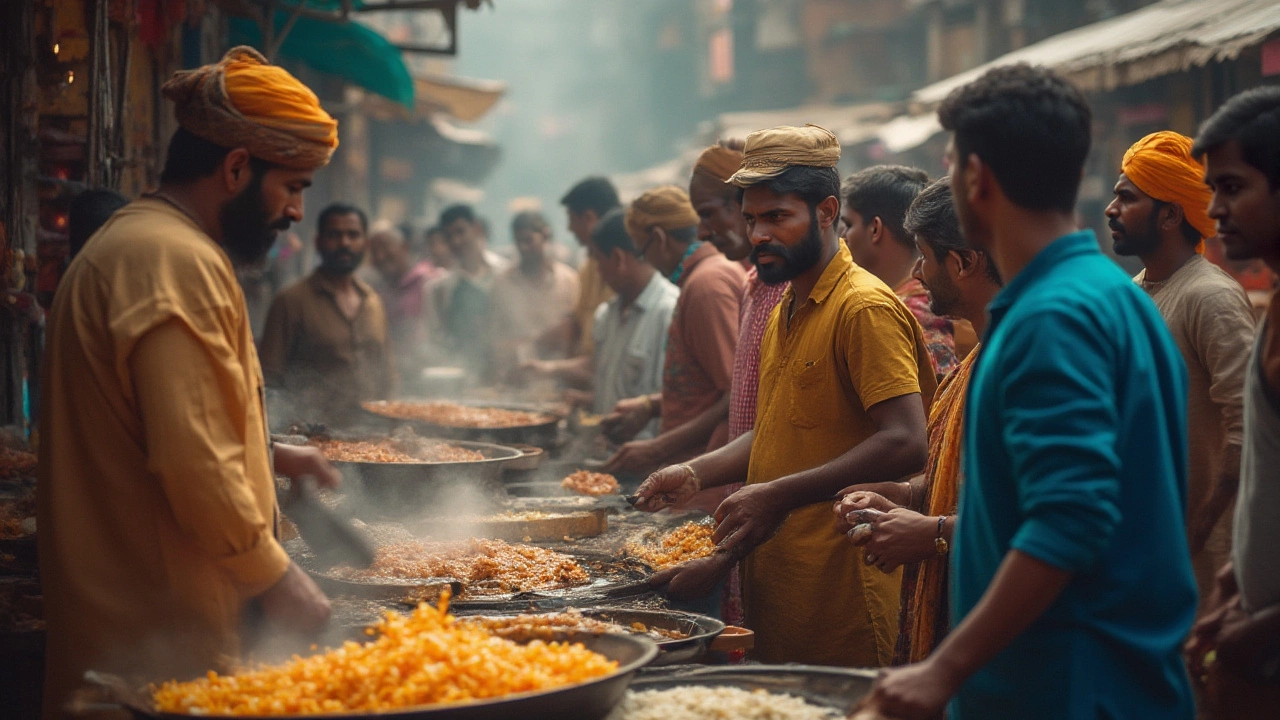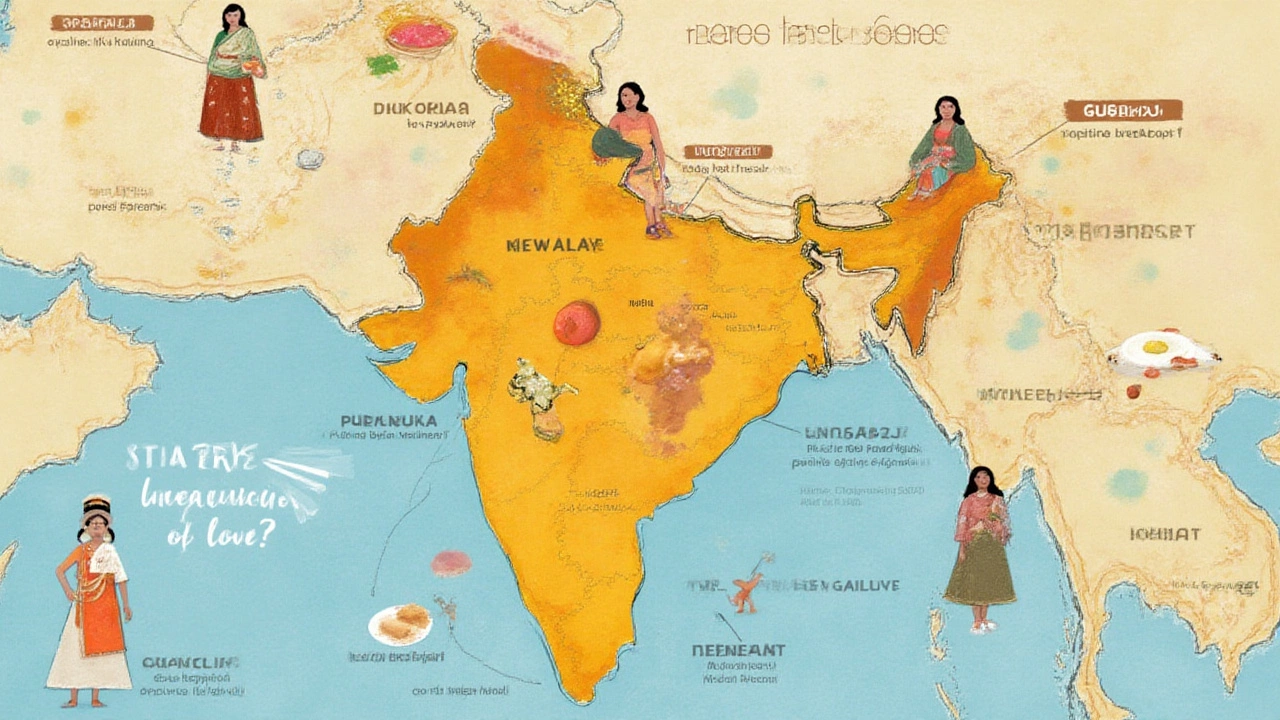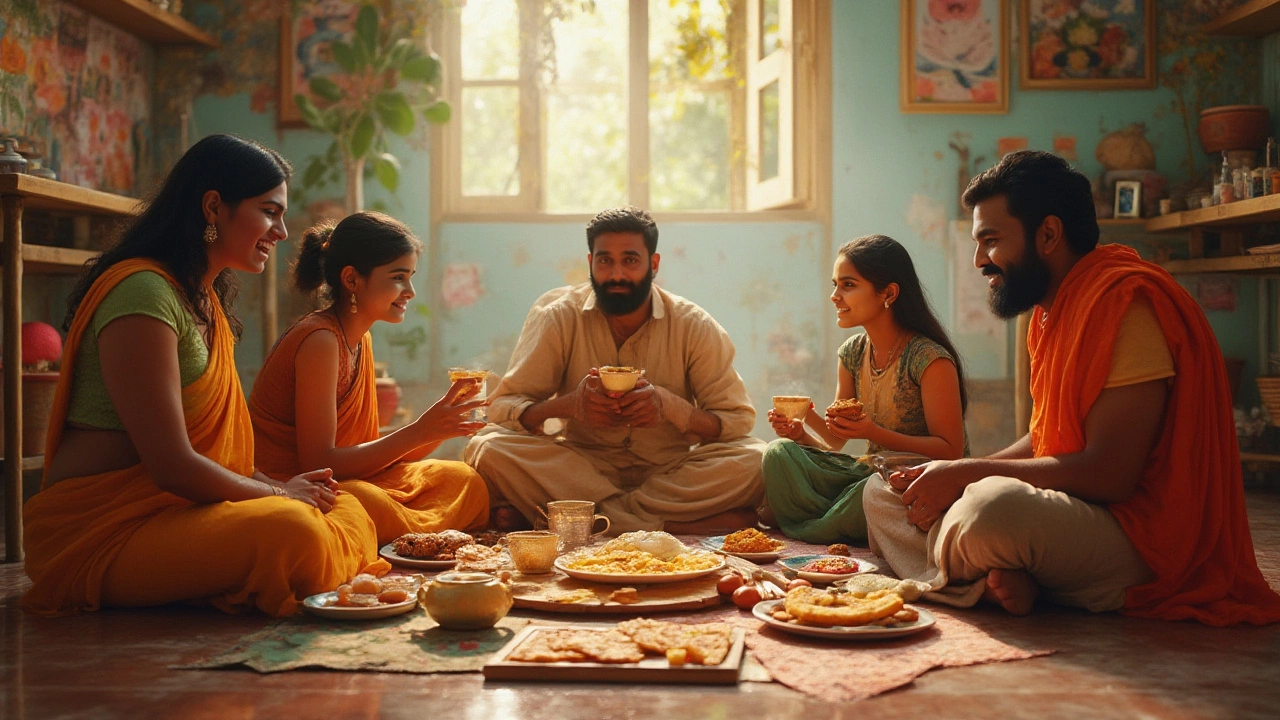Whatever you picture when you think of breakfast, chances are it’s totally different from what a regular morning looks like in India. Where else do you find dozens of breakfast dishes, some eaten only in one city, and others loved across the entire country? It’s a wild and delicious ride from steamy South Indian kitchens making fluffy idlis to North Indian homes stirring up spiced chickpeas before the sun rises. But here’s where the conversation gets spicy—India doesn’t really have an official national breakfast. Crazy, right? With such bold flavors and generations of tradition, you’d think one dish rules above all. But ask anyone in India for the "national breakfast," and you’ll ignite more debate than a cricket final in Mumbai. So, which dishes come close? Why do tastes swing from sweet semolina porridge in the West to tangy fermented rice pancakes in the South? And what does a regular Indian breakfast say about the country’s love for morning rituals?
The Unofficial National Breakfast: More Than Just Idli or Paratha
Let’s cut straight to the strongest contenders for the title. If you ask a room full of Indians—which is already tough, because you’ll never get complete agreement—you’ll hear the same shortlist: idli, dosa, poha, paratha, and upma (and if you’re in Mumbai, expect a vote or two for pav bhaji). Don’t be surprised if someone insists on chai and biscuits, too. According to a 2023 survey by Swiggy, India’s biggest food delivery app, idli topped the charts as the most-ordered breakfast item, especially in cities like Bengaluru and Hyderabad, with a staggering 33 million plates delivered that year alone. That’s almost enough to feed the whole population of Canada, just with idlis!
But let’s not skip North India, where no breakfast feels complete without a hot, ghee-slathered paratha stuffed with potatoes or paneer. In Punjab and Delhi, paratha is basically morning fuel: crispy, golden, and often splashed with a dollop of cool yogurt and spicy pickle. In Maharashtra and Madhya Pradesh, poha—flattened rice with turmeric, peas, lemon and peanuts—takes center stage. It’s quick, filling, and perfect for busy families on the move. South of the Vindhyas, dosas rule the breakfast table. These crepe-like beauties are made with fermented rice and lentil batter, and can be paper-thin or thick, plain or filled with masala potatoes. Pair them with coconut chutney and sambar (a tangy lentil stew), and you’ve got a meal that locals swear keeps you full for hours.
Here’s a fun tidbit: no matter the region, Indian breakfast is very rarely sweet. Unlike Western breakfasts, sugar takes a backseat. Instead, it’s all about savory, spicy, even tangy dishes—think of sambar’s sour punch, pickle’s fiery bite, and poha’s squeeze of lime. This savory streak makes Indian breakfasts more like a full meal rather than a quick snack. And the morning isn’t complete without a hot cup of chai (always with milk and sometimes with ginger and cardamom), or freshly brewed filter coffee in South Indian homes.
If you like numbers, check this out:
| Breakfast Dish | Region(s) Most Popular | 2023 Delivery Orders (in millions) |
|---|---|---|
| Idli | South India | 33 |
| Poha | Central & West India | 9 |
| Paratha | North India | 7 |
| Dosa | South India | 11 |
| Pav Bhaji | West India | 4 |
The thing is, what’s "national" about Indian breakfast is actually how local it is. There’s almost a proud stubbornness to stick to local classics. But if you’re traveling and want to taste something almost everyone will love, you can’t go wrong with idli or dosa. And remember, the most important national breakfast of India is the one that brings people together, usually over rounds of tea and long conversations.

How Indian Breakfast Reflects Culture, Climate, and History
Scratch beneath the delicious surface, and you’ll spot something fascinating: Indian breakfast is a cultural time capsule. What shows up on a plate isn’t just about convenience or old habits—it’s about surviving sweltering heat, working in the fields, religious practices, and even food shortages from generations past.
Take dosa and idli in the south. Why fermented rice and lentils? Fermenting not only makes food easier to digest but gives gut-friendly bacteria a boost—super important in hot, humid climates where food spoils quickly. Heading north, stuffed parathas often use wheat because the cold winters of Punjab and Haryana made wheat the staple crop. The spiced potato, radish, or paneer filling isn’t just flavor: it’s Winter’s secret weapon for fighting off chilly mornings and keeping you warm until lunchtime.
Religious rules also play a part. Many Hindus and Jains, for instance, avoid eggs and meat for breakfast—all the more reason why vegetarian classics like upma, poha, and idli have evolved in nearly every region. In Kerala and Tamil Nadu, rice is king, so it turns up not only at dinner but bright and early for breakfast in forms like puttu (cylindrical steamed rice cakes) and appam (lacy rice pancakes served with coconut milk or stew). Meanwhile, coastal breakfast dishes may spark with coconut, fish, or spices that are grown just a few kilometers away.
Another cool fact: British rule left its fingerprints mostly on urban breakfasts, where toast, omelets, and cutlets made their way into the Indian morning ritual. But even these got an Indian makeover. Mumbai’s "bun maska" (a soft bun slathered in butter) was born in Irani cafés run by Persian immigrants, a style that thrives to this day. In Kolkata, you’ll find people dunking crisp toast into sweet, milky tea while discussing politics at century-old coffee houses.
At its heart, Indian breakfast is about using what’s local, maximizing nutrition, and stretching ingredients as far as possible—good lessons from times when food security was a bigger challenge.
Here’s a table showing how regional climates influence breakfast favorites:
| Region | Climate | Main Breakfast Ingredient | Popular Dishes |
|---|---|---|---|
| South | Hot, humid | Rice, lentils | Idli, dosa, upma |
| North | Cold winters | Wheat, potatoes | Paratha, puri bhaaji |
| West | Warm, dry | Poha, bread | Poha, pav bhaji |
| East | Moist, warm | Rice, eggs | Panta bhat, luchi |
The "why" behind every breakfast is anything but random. It’s a storybook of what people grew, how they worked, and even what they believed. Dig in, and you’ll always find more than meets the eye (or mouth).

Tips, Tricks, and Modern Breakfast Twists From the Subcontinent
If you’re thinking of making an Indian breakfast at home, here’s the trick—don’t rush it. Indian breakfasts shine when you let flavors mingle overnight, which is why so many iconic dishes use batters that soak or ferment for hours. Even upma, which seems simple, tastes best when you temper mustard seeds, curry leaves, and fresh ginger just right. Poha too: rinse that flattened rice lightly, never soak, and always finish with fresh coriander and squeeze of lime.
Here are a few tips that make all the difference:
- Ferment for flavor: For dosa and idli, allow at least 8-10 hours of fermentation at room temperature. If you live in a cold climate, keep your batter in the oven with just the light turned on—easy heat hack!
- Batch cook: Parathas freeze well. Stack cooked, cooled parathas with parchment between layers and freeze in zip-top bags. Quick homemade breakfast anytime (just reheat on the pan).
- Protein boost: Add moong dal (split green gram) to idli batter or chickpea flour to upma to bump up protein content for growing kids or active adults. A local dietician in Chennai recommends this to parents struggling with picky eaters.
- Shortcut seasoning: Store-bought chutneys and sambar powders cut down on prep time. My favorite hack in a rush: peanut chutney with just roasted peanuts, garlic, chilies, and a splash of lemon in a blender.
Fast-forward to 2025, and Indian breakfast is getting a modern makeover. Young professionals grab ragi (finger millet) pancakes, quinoa upma, or stuffed multigrain dosas from hip cafes in Delhi and Bengaluru. Yet, nothing replaces the warmth of home-cooked poha or the aroma of fresh parathas flipping on a grandmother’s griddle. Street vendors are also leaning into health trends, swapping fried samosas for steamed dhoklas or oat chillas. Even intrepid cafes in New York and London have caught on—now you can order dosa wraps or spice-filled breakfast bowls within a stone’s throw of the Thames or Hudson.
Travelers heading to India can score big by sampling different breakfasts region by region. Try idli in Chennai, poha in Indore, parathas in Amritsar, and pav bhaji in Mumbai—each place insists their way is best, and honestly, you’re always the winner. Restaurants worth their salt often serve mini-breakfast platters, so you don’t have to pick just one dish. If you’re stuck at home, brands like iD Fresh and MTR now deliver ready-to-cook idli or dosa batter across the globe—easy for authentic taste minus hours in the kitchen.
Bottom line? The chase for "the" national breakfast dish is a bit of a myth, but the excitement around it is real. Next time you’re munching on anything—from humble upma to royal parathas—remember, you’re digging into a breakfast routine as old (and as fierce) as the country itself.
